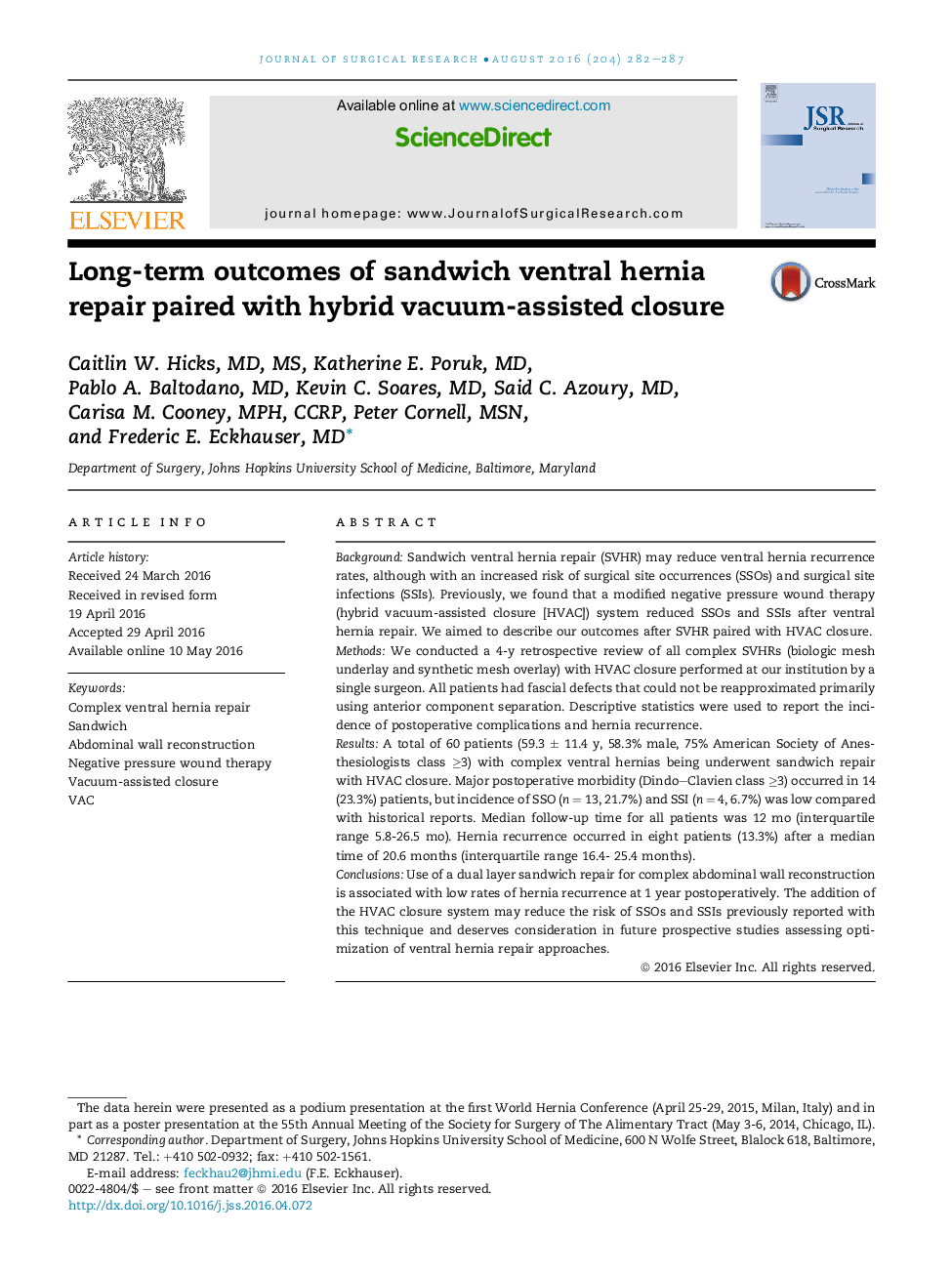| Article ID | Journal | Published Year | Pages | File Type |
|---|---|---|---|---|
| 4299110 | Journal of Surgical Research | 2016 | 6 Pages |
BackgroundSandwich ventral hernia repair (SVHR) may reduce ventral hernia recurrence rates, although with an increased risk of surgical site occurrences (SSOs) and surgical site infections (SSIs). Previously, we found that a modified negative pressure wound therapy (hybrid vacuum-assisted closure [HVAC]) system reduced SSOs and SSIs after ventral hernia repair. We aimed to describe our outcomes after SVHR paired with HVAC closure.MethodsWe conducted a 4-y retrospective review of all complex SVHRs (biologic mesh underlay and synthetic mesh overlay) with HVAC closure performed at our institution by a single surgeon. All patients had fascial defects that could not be reapproximated primarily using anterior component separation. Descriptive statistics were used to report the incidence of postoperative complications and hernia recurrence.ResultsA total of 60 patients (59.3 ± 11.4 y, 58.3% male, 75% American Society of Anesthesiologists class ≥3) with complex ventral hernias being underwent sandwich repair with HVAC closure. Major postoperative morbidity (Dindo–Clavien class ≥3) occurred in 14 (23.3%) patients, but incidence of SSO (n = 13, 21.7%) and SSI (n = 4, 6.7%) was low compared with historical reports. Median follow-up time for all patients was 12 mo (interquartile range 5.8-26.5 mo). Hernia recurrence occurred in eight patients (13.3%) after a median time of 20.6 months (interquartile range 16.4- 25.4 months).ConclusionsUse of a dual layer sandwich repair for complex abdominal wall reconstruction is associated with low rates of hernia recurrence at 1 year postoperatively. The addition of the HVAC closure system may reduce the risk of SSOs and SSIs previously reported with this technique and deserves consideration in future prospective studies assessing optimization of ventral hernia repair approaches.
